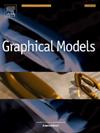TerraCraft:使用自然语言的城市规模生成过程建模
IF 2.2
4区 计算机科学
Q2 COMPUTER SCIENCE, SOFTWARE ENGINEERING
引用次数: 0
摘要
由于需要资源密集的训练和数据集,大规模3D场景的自动生成提出了一个重大挑战。这与2D版本形成鲜明对比,后者由于速度和质量的优势而变得唾手可得。然而,之前在3D过程建模方面的工作已经证明了使用算法和用户定义规则的组合来生成高质量资产的前景。为了充分利用2D生成模型和程序建模工具的优势,我们提出了TerraCraft,一个用于生成几何高质量3D城市规模场景的新框架。通过使用大型语言模型(llm), TerraCraft可以从自然文本描述中生成城市规模的3D场景。凭借其直观的操作和强大的功能,TerraCraft使用户能够轻松地为各种应用(如虚拟现实和游戏设计)创建几何上高质量的场景。我们通过广泛的实验和用户研究验证了TerraCraft的有效性,与现有基线相比,显示了其优越的性能。本文章由计算机程序翻译,如有差异,请以英文原文为准。
TerraCraft: City-scale generative procedural modeling with natural languages
Automated generation of large-scale 3D scenes presents a significant challenge due to the resource-intensive training and datasets required. This is in sharp contrast to the 2D counterparts that have become readily available due to their superior speed and quality. However, prior work in 3D procedural modeling has demonstrated promise in generating high-quality assets using the combination of algorithms and user-defined rules. To leverage the best of both 2D generative models and procedural modeling tools, we present TerraCraft, a novel framework for generating geometrically high-quality 3D city-scale scenes. By utilizing Large Language Models (LLMs), TerraCraft can generate city-scale 3D scenes from natural text descriptions. With its intuitive operation and powerful capabilities, TerraCraft enables users to easily create geometrically high-quality scenes readily for various applications, such as virtual reality and game design. We validate TerraCraft’s effectiveness through extensive experiments and user studies, showing its superior performance compared to existing baselines.
求助全文
通过发布文献求助,成功后即可免费获取论文全文。
去求助
来源期刊

Graphical Models
工程技术-计算机:软件工程
CiteScore
3.60
自引率
5.90%
发文量
15
审稿时长
47 days
期刊介绍:
Graphical Models is recognized internationally as a highly rated, top tier journal and is focused on the creation, geometric processing, animation, and visualization of graphical models and on their applications in engineering, science, culture, and entertainment. GMOD provides its readers with thoroughly reviewed and carefully selected papers that disseminate exciting innovations, that teach rigorous theoretical foundations, that propose robust and efficient solutions, or that describe ambitious systems or applications in a variety of topics.
We invite papers in five categories: research (contributions of novel theoretical or practical approaches or solutions), survey (opinionated views of the state-of-the-art and challenges in a specific topic), system (the architecture and implementation details of an innovative architecture for a complete system that supports model/animation design, acquisition, analysis, visualization?), application (description of a novel application of know techniques and evaluation of its impact), or lecture (an elegant and inspiring perspective on previously published results that clarifies them and teaches them in a new way).
GMOD offers its authors an accelerated review, feedback from experts in the field, immediate online publication of accepted papers, no restriction on color and length (when justified by the content) in the online version, and a broad promotion of published papers. A prestigious group of editors selected from among the premier international researchers in their fields oversees the review process.
 求助内容:
求助内容: 应助结果提醒方式:
应助结果提醒方式:


